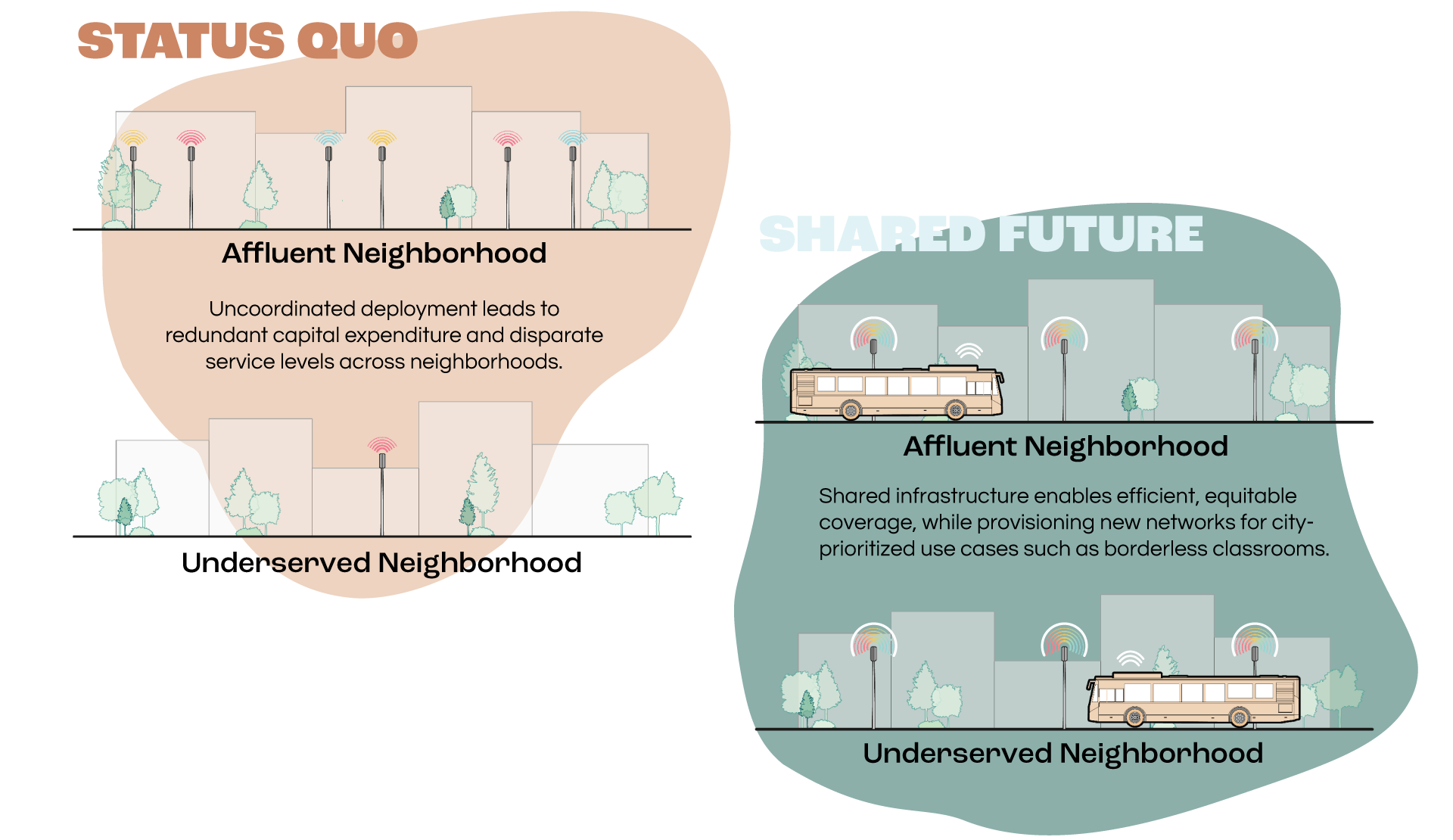HR&A Advisors, Inc. (HR&A), Schmidt Futures, Sidewalk Infrastructure Partners (SIP), and US Ignite have joined together to form the Community Wireless Coalition (the "Coalition" or “CWC”) based on their shared belief and vision that shared wireless networks are the key to an equitable 5G future.
As a group of partners invested in the equitable and innovative development of cities, we have come together to explore how shared wireless networks can bridge digital divides and allow communities to control their connected future.
The Problem
The inequitable roll-out of 5G threatens to exacerbate an urban digital divide that is already stubbornly persistent. Built on an expensive architecture of densely packed radios, the newest generation of wireless networks is forcing service providers to choose specific neighborhoods where they can economically provide coverage and others that will be left behind for years to come. In all of this, cities lose out, forced to live with over-built and cluttered cellular infrastructure while their core connectivity needs - such as children learning from home - go unaddressed.
75%
of American homes without broadband access are in urban or metropolitan areas.
Mobile Technology and Home Broadband 2019, Pew Research Center, 2019.
Our Approach
There’s no better time for cities to reimagine broadband deployment. To empower cities with tools unavailable in the status quo approach, the Community Wireless Coalition will explore alternative models of digital infrastructure development. Recent technology and spectrum policy innovations mean once-proprietary wireless networks can be developed by and shared among more stakeholders. All stakeholders - cities, residents, service providers, innovators, businesses - benefit, while simultaneously reducing redundant infrastructure and driving market competition.
City and local officials are in a powerful position to drive the agenda. The public assets - streetlights, rights-of-way, etc - needed to host the dense 5G radio equipment are often controlled by municipalities or other public authorities. Cities can harness these assets and embrace open network architecture and technology to ensure that the roll-out of 5G actually meets its great promise.


